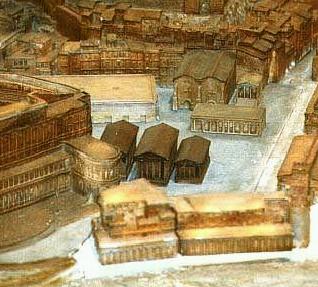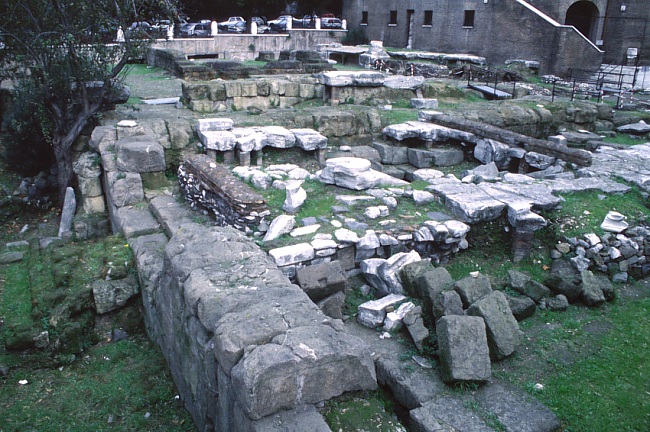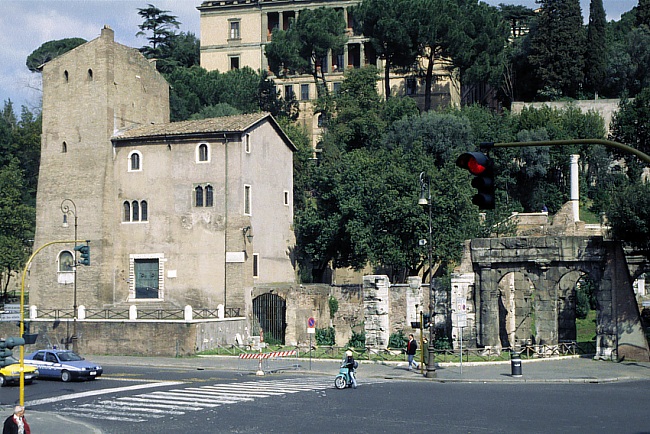
The vegetable market of Rome lying just outside the porta Carmentalis, in the ninth region of Augustus. Its south-east and north-east limits were marked by the Servian wall and the slope of the Capitoline hill, and it extended north-west across the present Piazza Montanara. On the west and south-west it probably extended originally to the river, but was afterwards diminished in area and practically enclosed by four temples, erected in foro holitorio, to PIETAS, JANUS, SPES and JUNO SOSPITA, and the theatre of Marcellus. The ruins of three of these temples exist beneath the church of S. Nicola in Carcere. Remains of other Temples lie under and around the Church of Sant'Omobono.
By the second century B.C. the forum had been paved, and considerable fragments of its pavement of travertine have been found between S. Nicola in Carcere and a wall of peperino that crosses the Piazza Montanara, for a distance of about 90 metres (BC 1875, 173). The details given as to this wall are insufficient. This peperino wall perhaps marks the northern limit of the forum which, after it was surrounded by buildings, was about 125 by 40-50 metres in area. Its eastern corner, between the Capitoline and the Servian wall, was closed by a building, apparently a large porticus, that has been erroneously identified with the PORTICUS MINUCIA. Its ruins were found in the Vicolo della Bufala. Other remains of this portico, at a slightly different orientation, are also to be seen in Piazza Montanara. The forum was connected with the vicus Iugarius and the forum Boarium by a street that ran south through the porta Carmentalis


Forum Holitoriumtemples under
the Church of Sant'Omobono.

What's there today -- immediately below the Capitoline Hill -- the arches to the right are the remains of the ancient Porta Carmentalis in the Republican (so-called, Servian)city walls. The truncated tower and house behind the fence on the platform, left, are Medieval, and the Palazzo on the Capitoline slope is Renaissance.